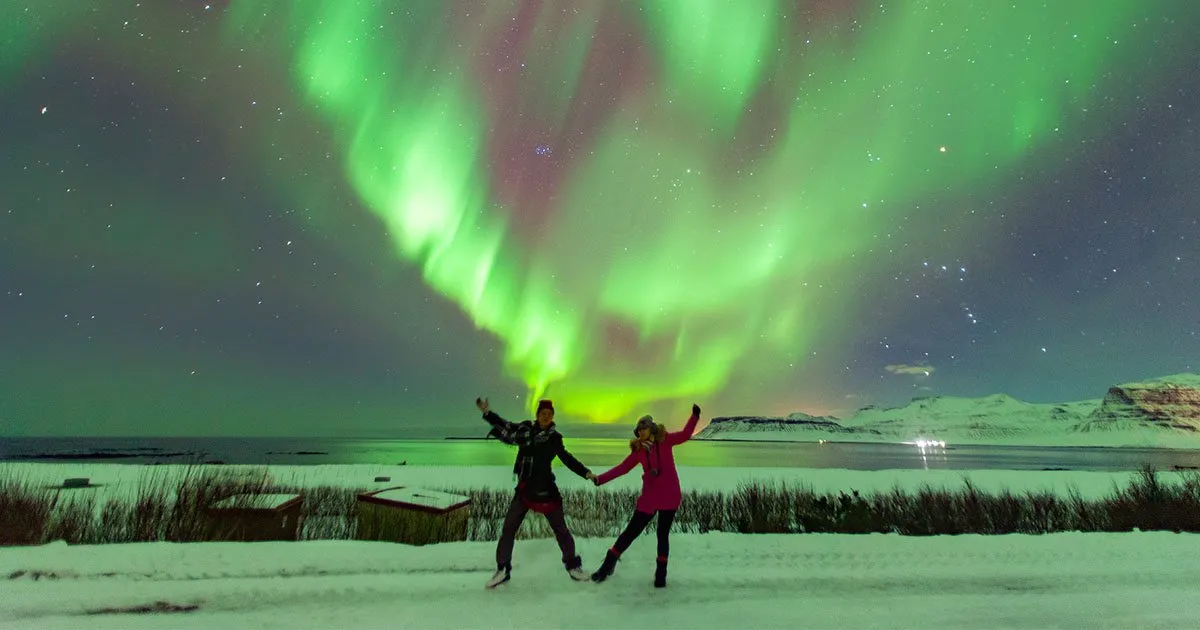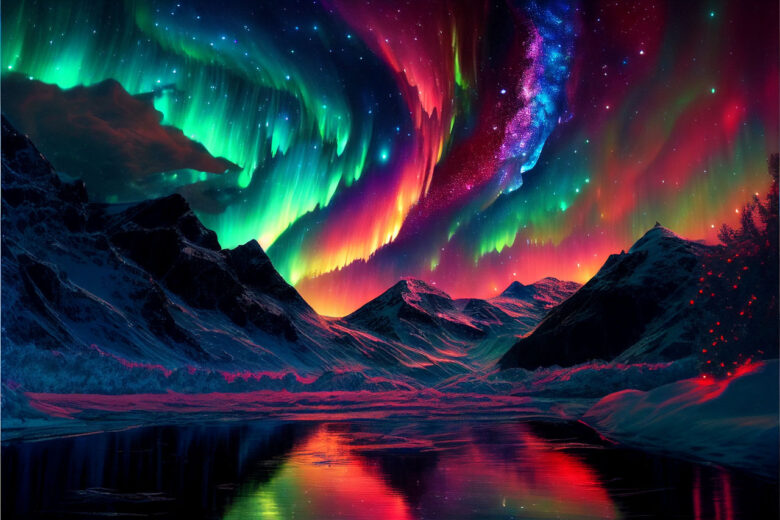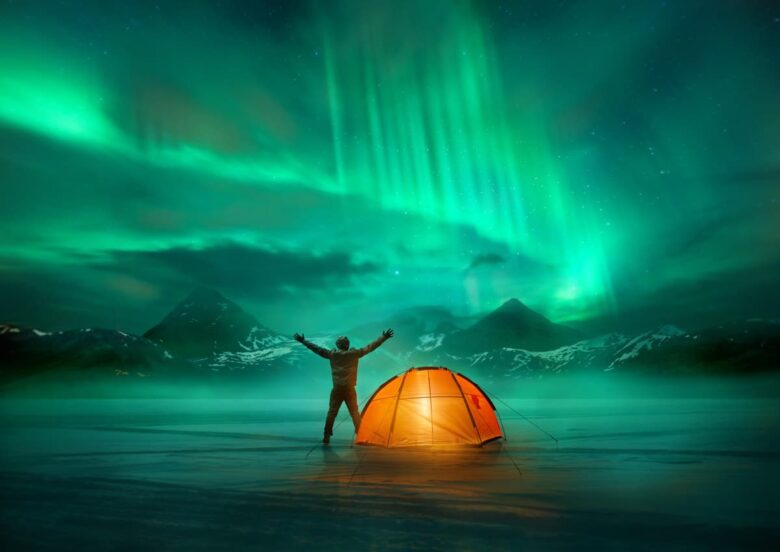The Northern Lights, or Aurora Borealis, are one of nature’s most awe-inspiring displays. These dancing ribbons of light, usually in shades of green, pink, and purple, grace the night skies in the polar regions, captivating those lucky enough to witness them. But what causes this mesmerizing spectacle? The answer lies in the collision of charged particles from the sun with Earth’s atmosphere.
Contents
- Understanding the Science Behind the Aurora Borealis
- Best Times of the Year to See Northern Lights
- Top Northern Lights Destinations Worldwide
- How to Plan a Trip on a Budget
- Essential Gear for Chasing the Aurora Borealis
- Photography Tips for Capturing Stunning Auroras
- Local Folklore and Cultural Significance of the Lights
- Safety Precautions for Adventures
- The Role of Solar Activity in Visibility
- Tips for Maximizing Your Chances of Witnessing Auroras
- Conclusion
Understanding the Science Behind the Aurora Borealis
At its core, the Northern Lights result from solar wind, a stream of charged particles, colliding with Earth’s magnetic field. This collision energizes particles in the atmosphere, causing them to emit light. Different gases emit distinct colors, which is why the Aurora Borealis exhibits various hues. The altitude at which this occurs determines the specific colors and shapes you see. If you’re curious to delve even deeper into the science behind this mesmerizing phenomenon, check out here this informative resource.

Source: kiwi.com
Best Times of the Year to See Northern Lights
Timing is crucial when chasing them. The best seasons are fall and winter when nights are the longest. In the Northern Hemisphere, September to April offers prime viewing opportunities. Conversely, the Southern Hemisphere experiences the Aurora Australis, best observed from March to September.
Top Northern Lights Destinations Worldwide
If you’re determined to witness them, consider visiting some of the world’s most renowned aurora-viewing destinations. These locations offer not only excellent visibility but also a range of activities to enhance your adventure:
Tromsø, Norway: Located well within the Arctic Circle, Tromsø is a top choice for Northern Lights enthusiasts. Its stunning fjords and vibrant culture make it a perfect backdrop for your aurora chase.
Fairbanks, Alaska: Fairbanks, known as “The Golden Heart of Alaska,” is a prime destination in the United States. Its clear winter skies and accessible wilderness areas provide excellent aurora viewing opportunities.
Abisko, Sweden: Abisko National Park is famous for its pristine wilderness and minimal light pollution, making it a dream location for aurora photography. The park even boasts its own Aurora Sky Station.
Yellowknife, Canada: Situated in Canada’s Northwest Territories, Yellowknife offers fantastic chances to witness them. Its remote location and freezing temperatures make it an ideal spot for aurora hunting.
Ivalo, Finland: Nestled in Finnish Lapland, Ivalo offers a unique experience, including the opportunity to sleep in a glass igloo and watch the auroras from the comfort of your bed.
Each of these destinations offers a unique experience, so choose the one that aligns best with your preferences and travel goals.

Source: deviantart.com
How to Plan a Trip on a Budget
Traveling to witness the Northern Lights need not break the bank. Start by booking flights and accommodations well in advance, and be flexible with your travel dates. Look for budget-friendly tours, and consider staying in hostels or cabins. Finally, pack your own meals and rent gear locally to save on expenses.
Essential Gear for Chasing the Aurora Borealis
To ensure a comfortable and successful aurora-chasing experience, pack warm clothing, insulated boots, and hand warmers. A good camera, tripod, and wide-angle lens are essential for capturing stunning photographs.
Photography Tips for Capturing Stunning Auroras
Photographing them requires patience and the right techniques. Set your camera to manual mode, use a low ISO, and keep exposure times long. Experiment with different compositions and settings to capture the lights’ vibrant colors and intricate patterns.

Source: medium.com
Local Folklore and Cultural Significance of the Lights
They hold a special place in the folklore and cultural heritage of many indigenous communities living in the polar regions. Their interpretations and stories about the auroras add depth and mystery to this already captivating natural phenomenon.
For example, the Inuit people of the Arctic have a rich mythology surrounding them. They believe that the auroras are the spirits of the departed engaging in a spirited game of soccer with a walrus skull. In Norse mythology, the lights are thought to be the Bifröst Bridge, a celestial pathway connecting Midgard (Earth) to Asgard (the realm of the gods).
These cultural narratives provide a unique and fascinating perspective on the Northern Lights, intertwining the scientific with the mystical and reminding us of the power of nature to inspire wonder and imagination.
Safety Precautions for Adventures
Chasing them can be an adventure, but it’s vital to prioritize safety. Dress warmly to avoid frostbite, and never venture out alone. Stay in well-traveled areas, and carry essential survival gear like a GPS, first aid kit, and emergency communication devices.
The Role of Solar Activity in Visibility
The Northern Lights are not a constant phenomenon but rather a celestial dance influenced by the sun’s activity. The sun goes through an 11-year cycle of solar activity, and this cycle plays a significant role in visibility and intensity.
During periods of high solar activity, known as solar maximum, the sun releases more solar wind and charged particles. This increased solar wind density and speed can lead to more intense and frequent auroras. Conversely, during solar minimum, which is the period of low solar activity, auroras are less common and less vibrant.
To maximize your chances of witnessing a dazzling display, keep an eye on solar forecasts and sunspot activity. There are various tools and websites that provide real-time data and predictions for aurora visibility, helping you plan your trip during periods of heightened solar activity.

Source: theindependent.com
Tips for Maximizing Your Chances of Witnessing Auroras
To increase your chances of seeing them, stay for several nights in your chosen destination, as auroras are not guaranteed every night. Be patient, as they can appear suddenly and vanish just as quickly. Check local forecasts and apps that predict aurora activity to optimize your timing.
Conclusion
In conclusion, embarking on a journey to witness the Northern Lights is a remarkable adventure that blends science, culture, and natural beauty. By understanding the science behind this dazzling phenomenon, choosing the right time and destination, and taking the necessary precautions, you can turn your dream of experiencing the Aurora Borealis into a breathtaking reality. So, pack your bags, bundle up, and get ready to chase the Northern Lights—the ultimate celestial spectacle.
